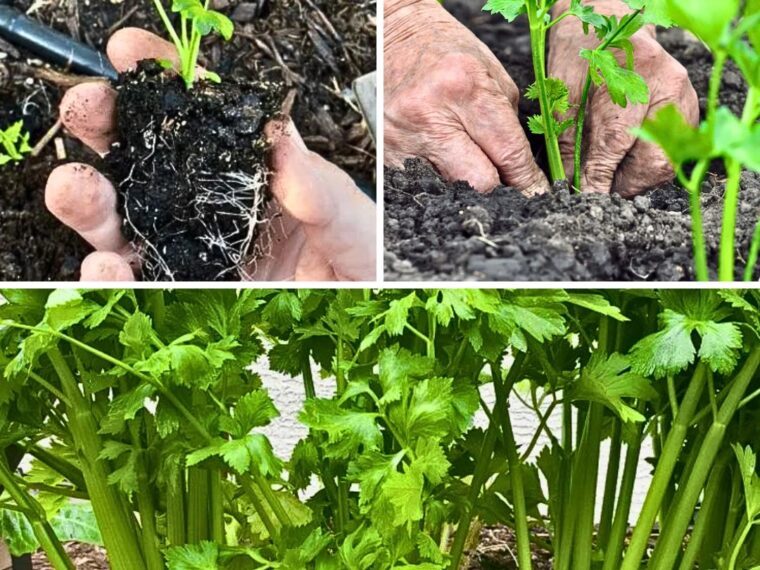3. Planting in Poor Soil
Celery is a heavy feeder and requires nutrient-rich soil to thrive. Planting in poor, sandy, or compacted soil can lead to weak plants and low yields.
What to avoid:
- Planting celery in soil that is low in organic matter or lacks nutrients.
- Ignoring soil pH, which can affect nutrient availability and plant health.
Best practice:
- Prepare the soil before planting by adding plenty of compost or well-rotted manure to improve fertility and drainage.
- Aim for a soil pH of 6.0 to 7.0, which is ideal for celery. If your soil is too acidic or alkaline, amend it accordingly.
4. Crowding Plants
Celery plants need space to grow and develop properly. Crowding the plants can lead to poor air circulation, increased disease risk, and smaller stalks.
What to avoid:
- Planting celery too closely together, which can stunt growth and make it difficult for the plants to access nutrients and water.
Best practice:
- Space celery plants at least 8 to 10 inches apart in rows that are 18 to 24 inches apart. This allows each plant to have enough room to grow and ensures good air circulation.
5. Ignoring Temperature Requirements
Celery is sensitive to temperature extremes and requires specific conditions to thrive. Planting at the wrong time or not protecting plants from temperature fluctuations can hinder growth.
What to avoid:
- Transplanting celery outdoors too early when the soil and air temperatures are still too cool.
- Failing to provide shade or protection during hot weather, which can cause celery to bolt (produce flowers and seeds prematurely).
Best practice:
- Wait until the soil temperature is consistently above 50°F (10°C) before transplanting celery outdoors.
- Provide shade during the hottest part of the day in summer or use row covers to protect the plants from temperature extremes.
6. Neglecting Fertilization
TO CONTINUE READING PLEASE SEE NEXT PAGE




